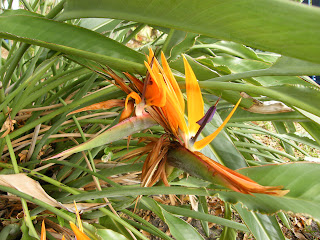Haiku School Alarm Clock |
Notes, CliffNotes pictures, scribbles, thoughts, ramblings as I walk, stumble fall & get back up on my way to and from Haiku School. It is up hill both ways!
HAIKU TECHNIQUES ~Jane Reichhold
Betty Drevniok: SOMETHING and the SOMETHING ELSE are set down together in clearly stated images. ONE PARTICULAR EVENT."
 |
| a spring nap downstream cherry trees in bud |
The Technique of Contrast - All one has to do is to contrast images. Excitement that opposites creates
The Technique of Association - "oneness" or showing how everything is part of everything else.
ancestors
the wild plum
blooms again
the wild plum
blooms again
The Technique of the Riddle "what is still to be seen"
on all four sides of the long gone shack-calla lilies
spirit bodies waving from cacti-plastic bags
Make puzzling terms as possible. old masters favorite trick with riddles was is that a flower falling or a butterfly?
The Technique of Sense or Switching -. Usually it involves hearing something one sees or vice versa or to switch between seeing and tasting.
home-grown lettuce
the taste of well-water
green
the taste of well-water
green
 |
The Technique of Simile –drop the “as & “like” give the reader an active part that makes him or her feel very smart when they discover the simile for him/herself.
 |
| a long journey some cherry petals begin to fall |
evening
waves come into the cove
one at a time
waves come into the cove
one at a time
The Technique of Double entendre (or double meanings) Only insiders knew the secret language and got the jokes.
eyes in secret places
deep in the purple middle
of an iris
deep in the purple middle
of an iris
The Technique of using Puns - hai of haiku means "joke, or fun, or unusual" there are still writers whose faces freeze into a frown when encountering a pun in three lines.
 |
| a sign at the fork in the road "fine dining" |
moon set
now it's right – how it fits
Half Moon Bay
now it's right – how it fits
Half Moon Bay
The Technique of Verb /Noun Exchange - getting double duty out of words. many words which function as both verbs and nouns. leaves, spots, flowers, blossoms, sprouts, greens, fall, spring, circles
spring rain
the willow strings
raindrops
the willow strings
raindrops
The Technique of Close Linkage - sub-topic to association also works with contrast
winter cold
finding on a beach
an open knife
finding on a beach
an open knife
The Technique of Leap Linkage - seeking the next level of difficulty, important point in creating with this technique is that the writer is always totally aware of his or her 'truth'
wildflowers
the early spring sunshine
in my hand
the early spring sunshine
in my hand
The Technique of Mixing It Up - reader does not know if nature is doing the acting or if a human is doing it. gerund (-ing added to a verb) combined with an action that seems sensible for both a human and for the nature/nature to do.
end of winter
covering the first row
of lettuce seeds
covering the first row
of lettuce seeds





No comments:
Post a Comment